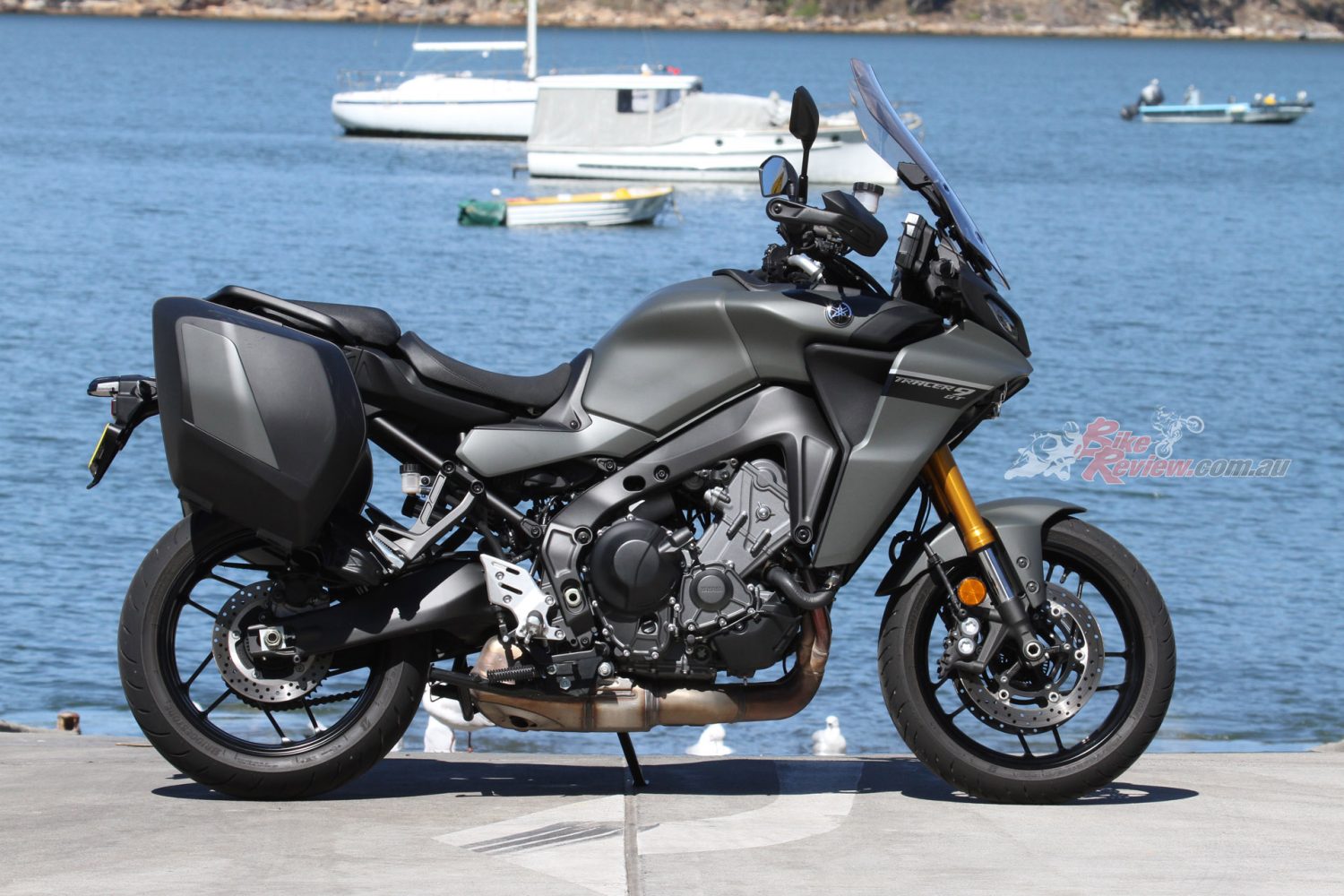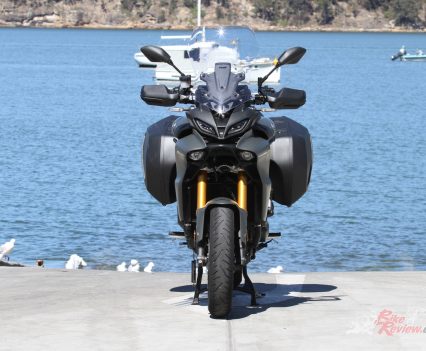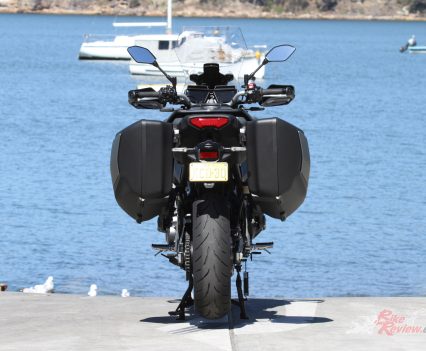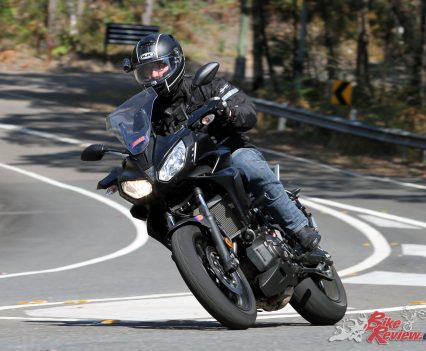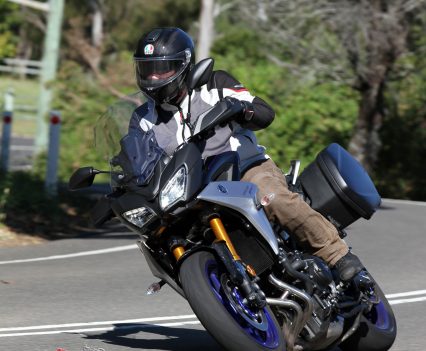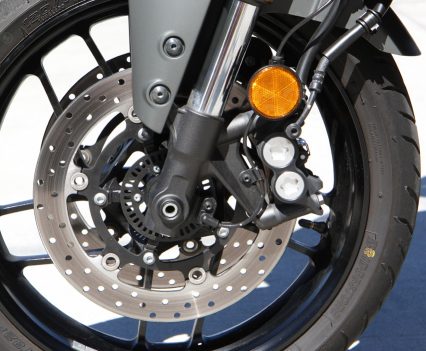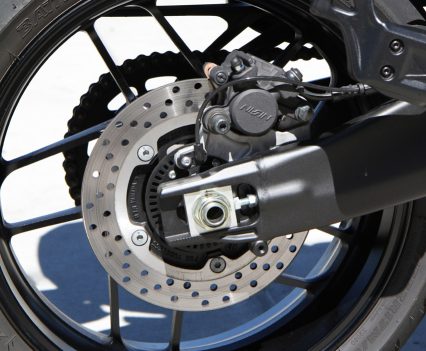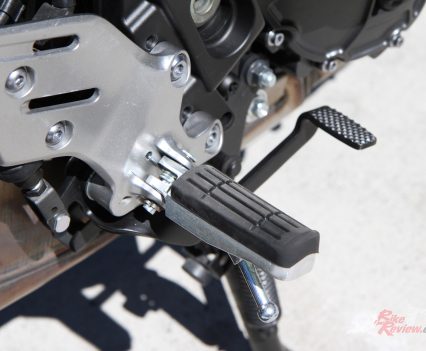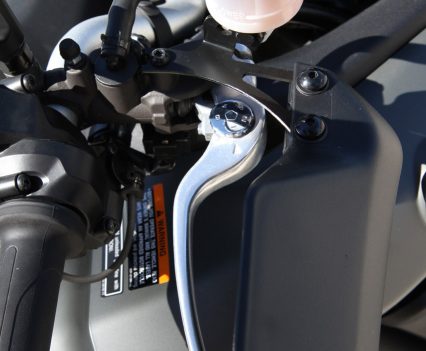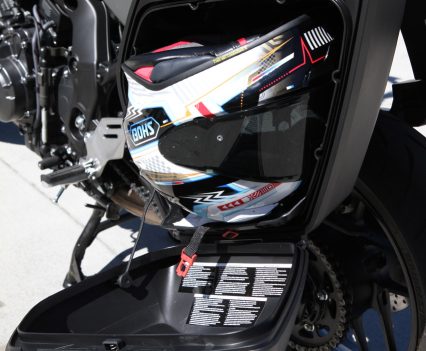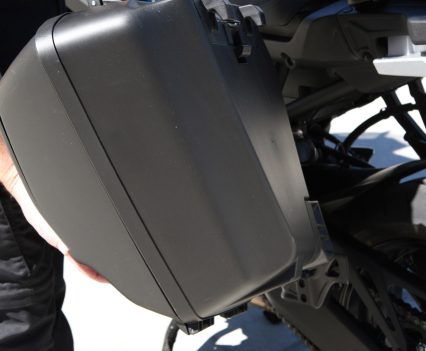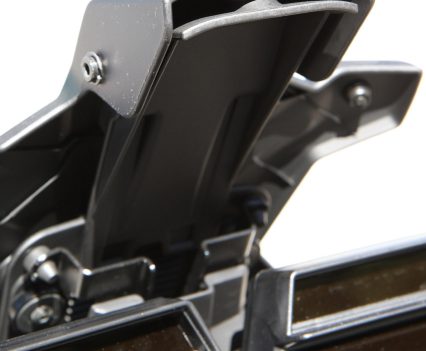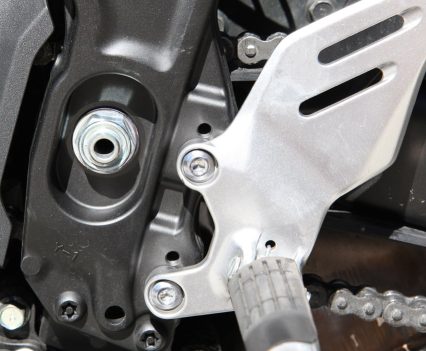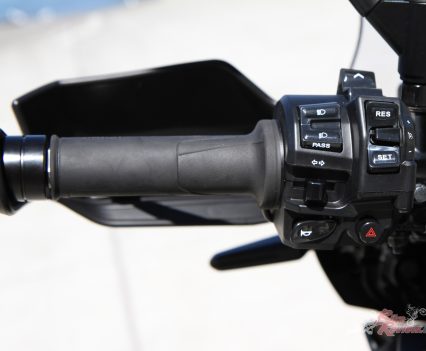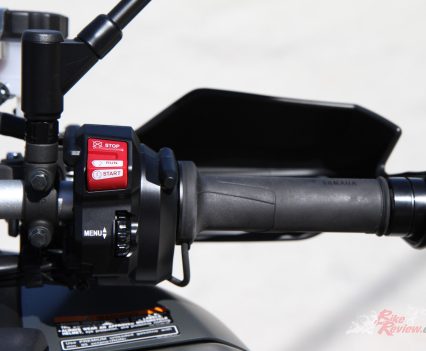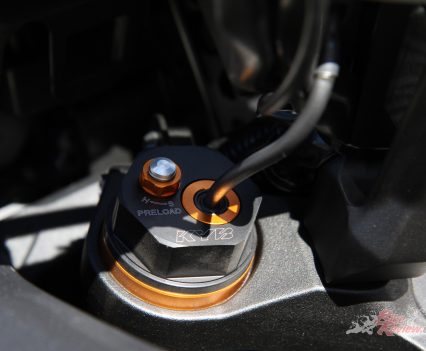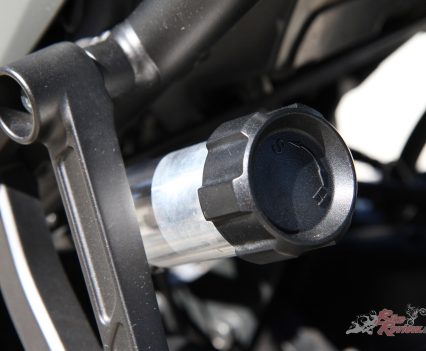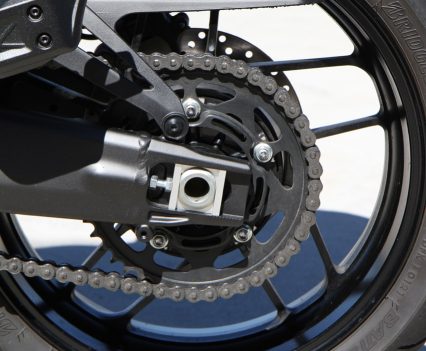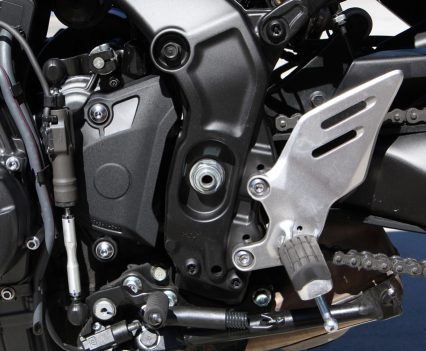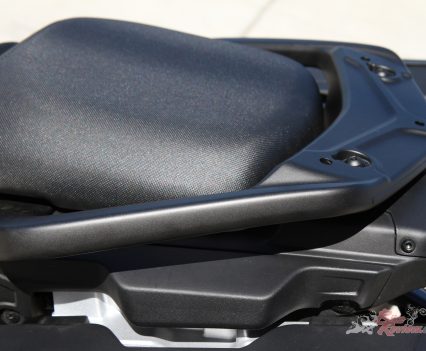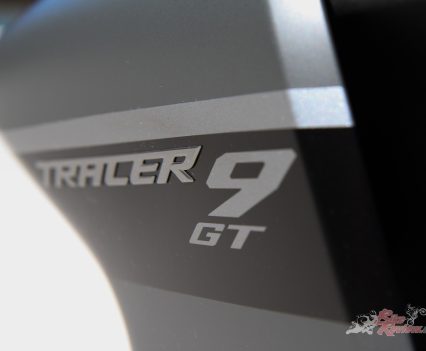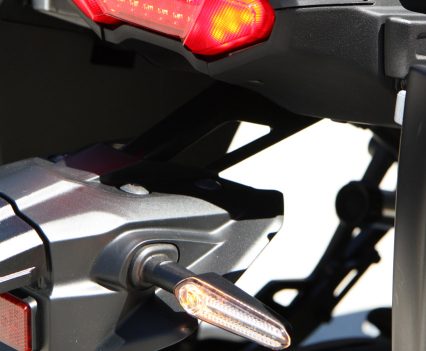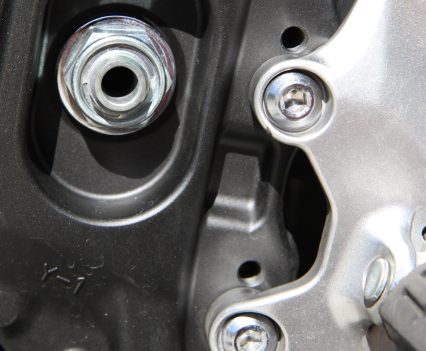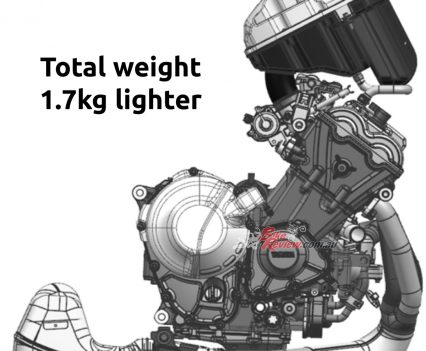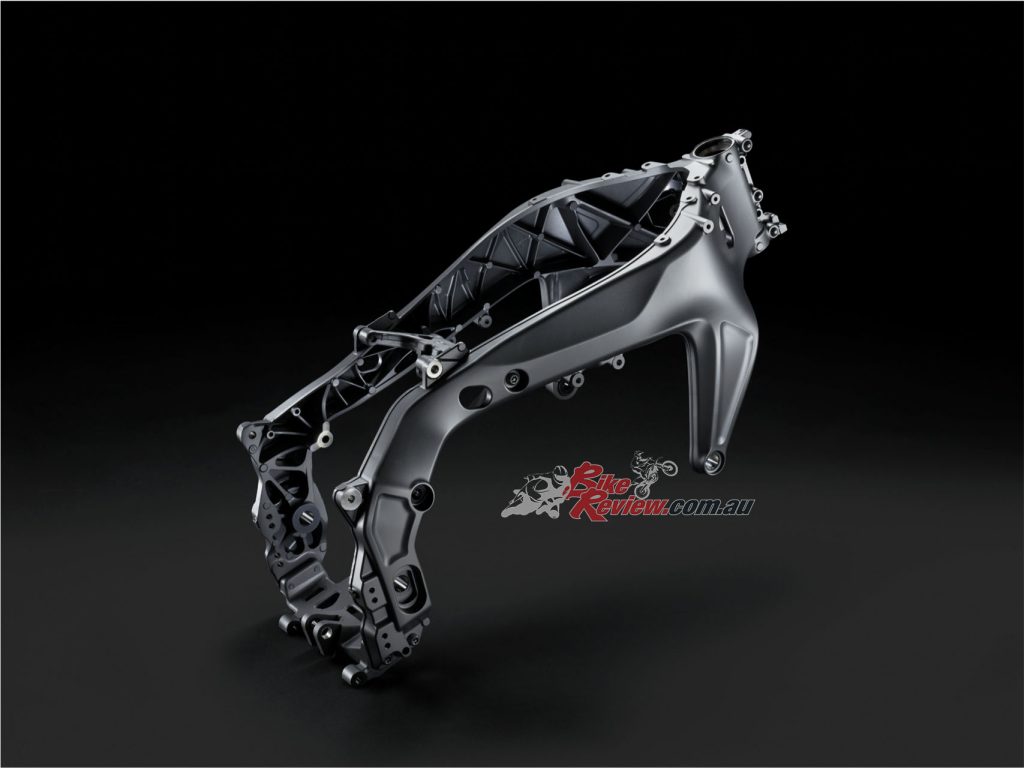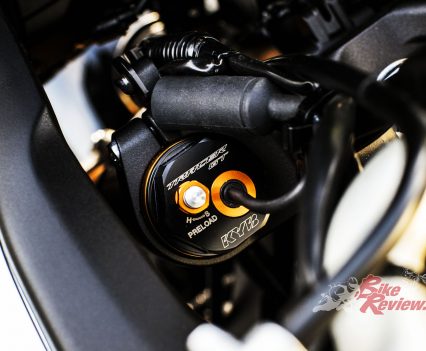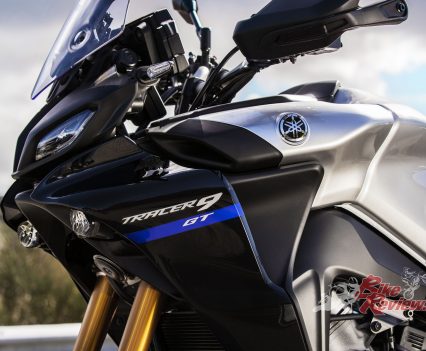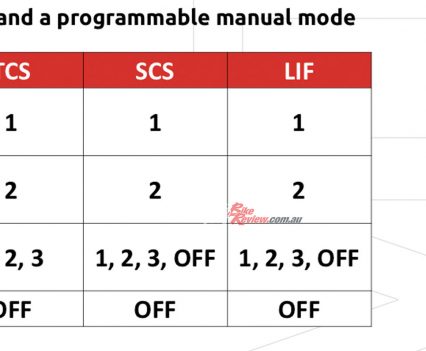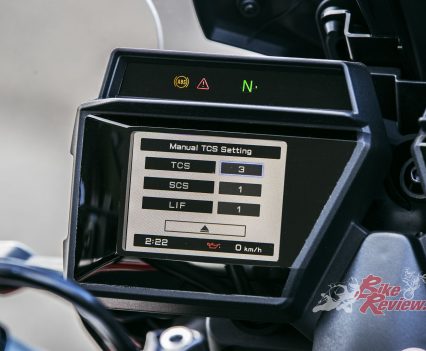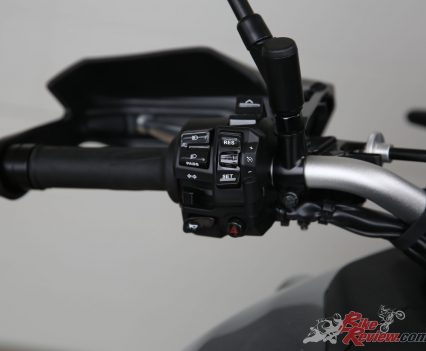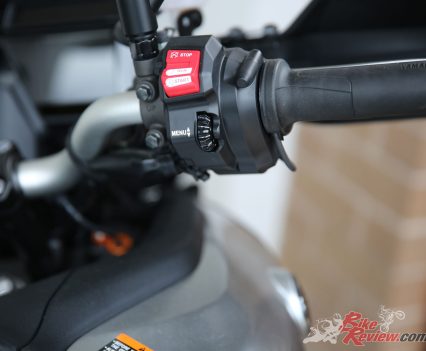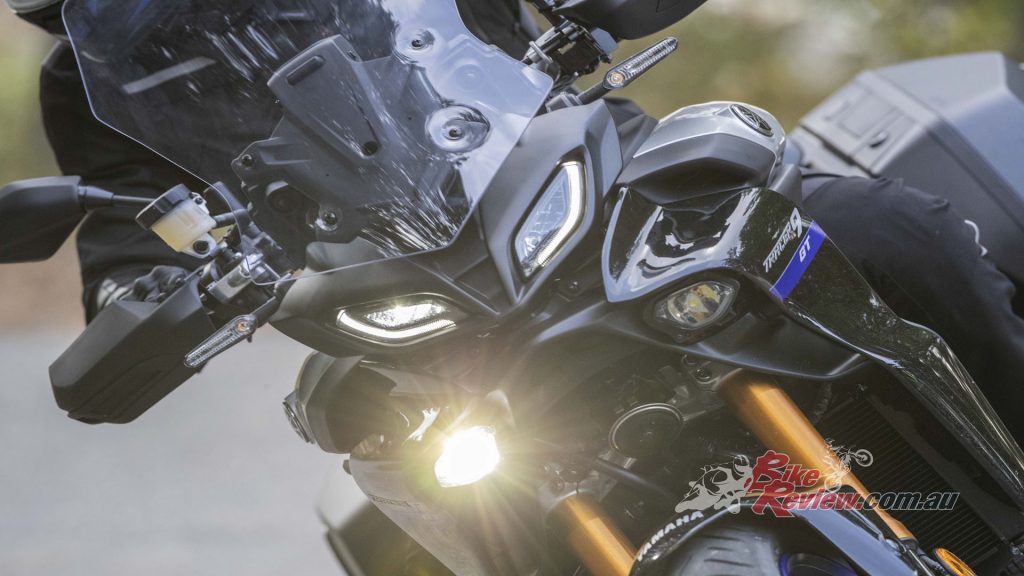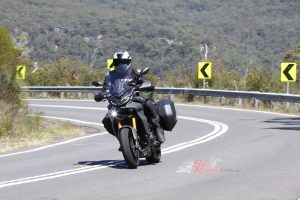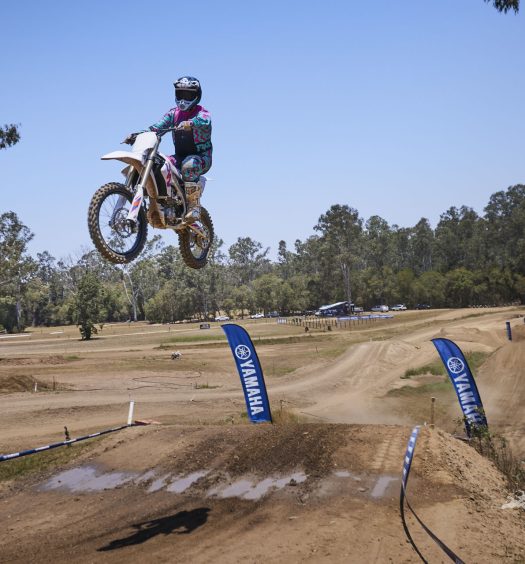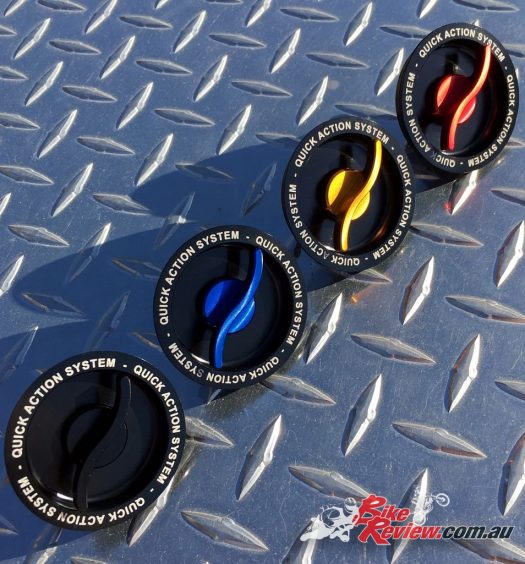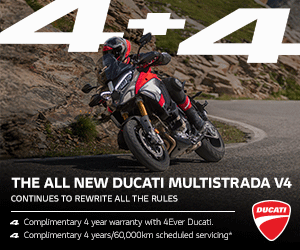The Tracer 9 GT arrived last year. We ran a Quick Test on it back in lockdown, and have since been able to hit the open road and put it to the test. Here is our review.. Photography: HMC Photography
Midway through last year, in the middle of lockdown, Zane managed to squeeze in a quick spin on the new Tracer 9 GT. We have since got the bike back and put some serious testing under its wheels over a two week period. Here is our full road test…
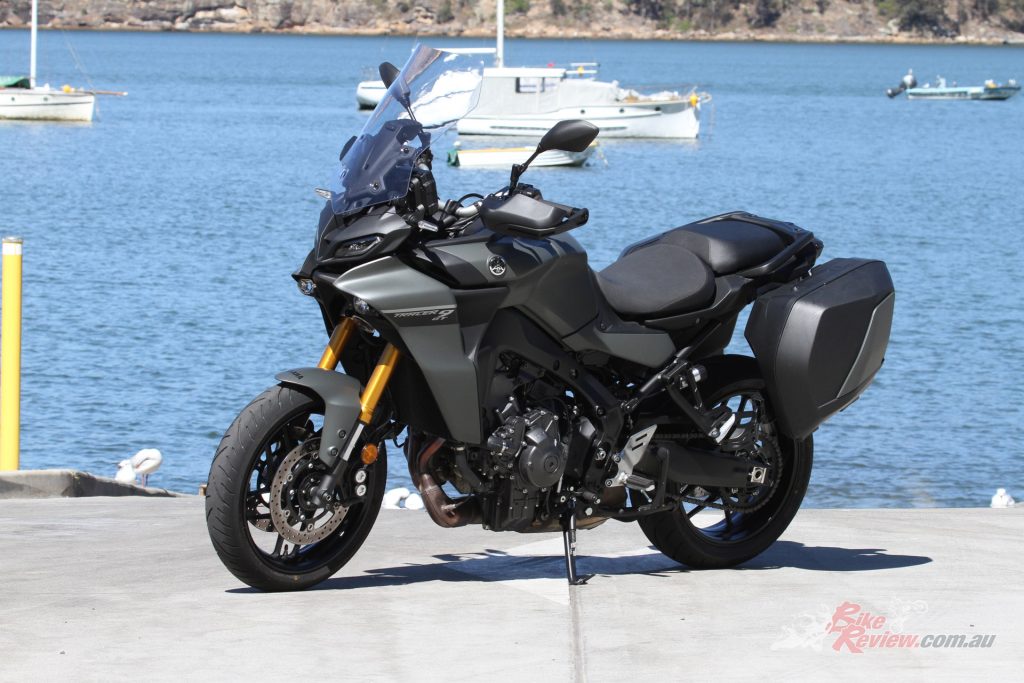
The Tracer 9 GT will set you back $23,999 Ride Away this year, up $700 on 2021. Our press unit was Tech Kamo.
Check out Zane’s quick spin of the Tracer 9 GT here…
I’ve always been a fan of the Yamaha Tracer range, whether the 700 or the 900. Some of you might remember our Long Term MT-07 Tracer, which was a fantastic bike that, despite being LAMS approved, well and truly punched above its weight. It’s a rare bike that seemed to be able to do anything. And that has always been one feature of the Tracer models that make them so appealing to so many riders, the triple’s versatility and also their simplicity. Hop on, hit start, and ride off happy.
When Yamaha released details about the 2021 model Tracer 9 GT updates (formerly the Tracer 900 GT), my first thought was, “Please don’t make a good simple bike too complicated and high tech”… However, after seeing through some of the technical updates (read about them in the tech breakout), I could see the bones of the bike were still that raw, engaging and down to earth machine that is still an extension of the stunning MT-09 (check out our MT-09 review here). The testing proved that correct.
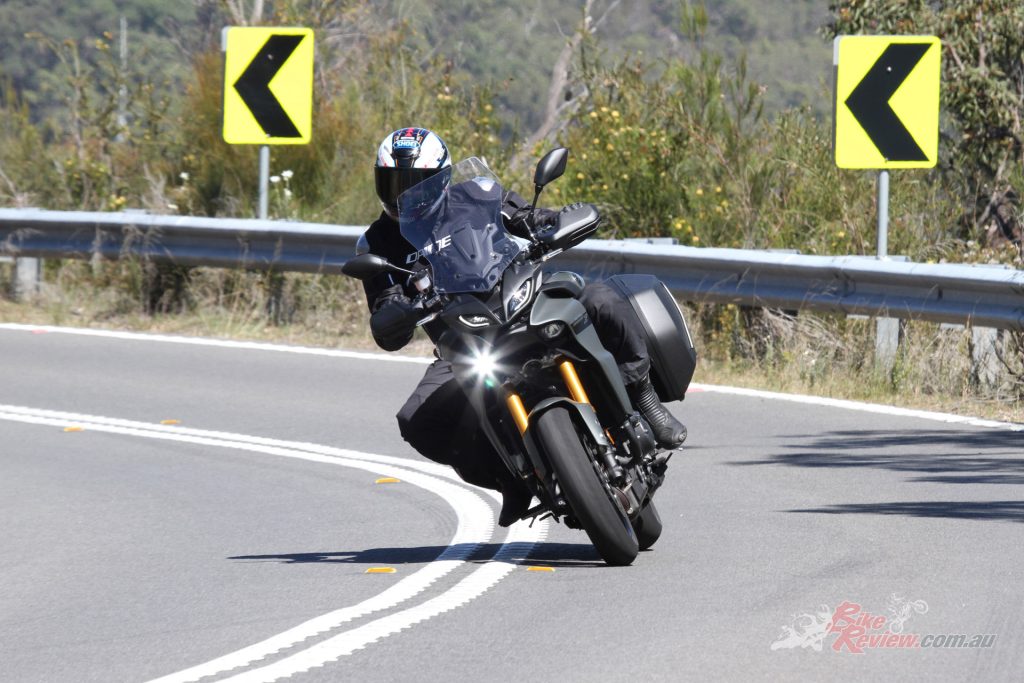
The Tracer 9 GT shares the same sweet handling as the MT-09, with a longer stretch and more sports touring geometry, it is a weapon in the twisties for a sports touring machine and super comfortable, with ample ground clearance.
The price hike over the previous generation is something I need to mention. The outgoing Yamaha Tracer 900 GT was $20,349 R/A and the new Tracer 9 GT is some $3,650 more. For that, you are getting the much higher tech electronics suit including Cornering Traction Control System [TCS], Slide Control System [SCS], Lift Control System [LIF] and Cornering ABS (BC). You also get the new dash, new CP3 motor and all-new chassis, and more, so it is quite a lot of bang for buck, remembering it is quite the premium model for a Japanese sports tourer.
The GT takes full advantage of that cracking CP3 motor, which is totally revised and smoother, more refined and mature than previously…
I love the riding position of the Tracer 9 GT. At 187cm tall, it suits me perfectly and with the adjustable screen, I was always able to find a comfortable setting, and I had the seat on the tallest setting (825mm v 810mm). I had the footpegs at the lowest point (they can go up 14mm and back 4mm) and the handlebars in the standard spot (they can rotate up and down, back and forth). It’s a very adjustable bike for rider ergonomics/rider triangle, a big bonus.
The seat is broad, comfortable for a few hours, and the pillion seat is generous, plus the large grab rails are great. The pillion pegs are not rubber damped and the panniers limit legroom but Heather found the Tracer a very comfy pillioning machine whether we were cruising or really fanging it. It’s a great two-up option, with a good height difference for a forward view for the passenger. The panniers make swinging a leg over the bike a real challenge, though, so I had to hold the front brake and step onboard via a footpeg each time I hopped on or off.
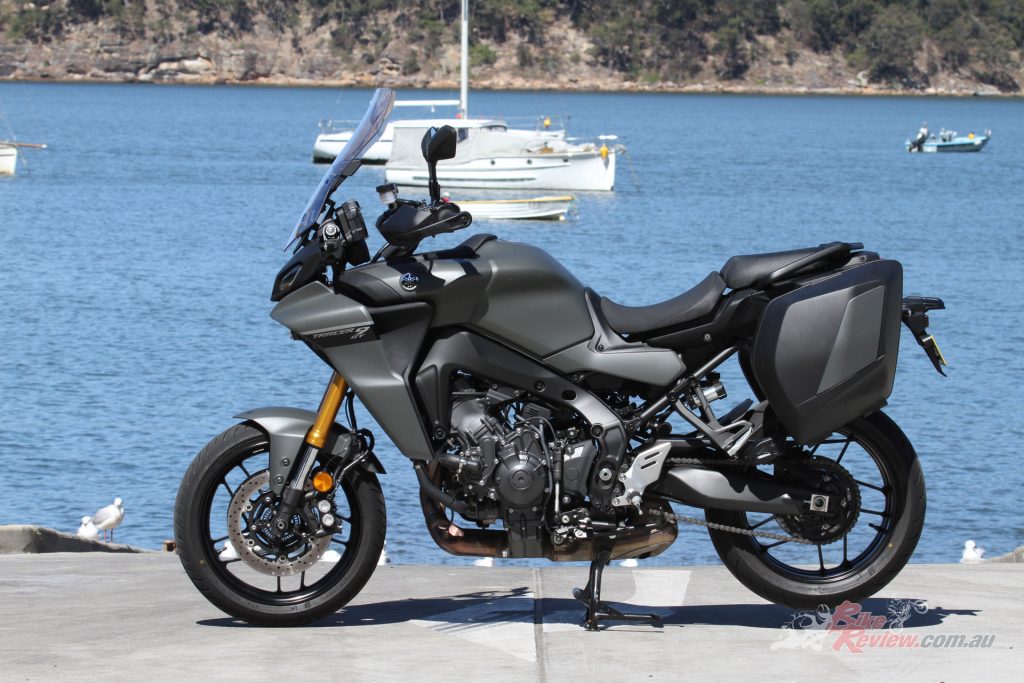
The Tracer 9 GT has adjustable handlebar position, seat height and footpeg position as well as windscreen height.
The handlebars are wide and a relaxed reach, but my knees do not quite fit into the shape of the fuel tank/frame. With the footpegs on the lower spot, they do touch down, but it’s good warning that you are pretty well on the limit of the Battlax T32 tyres, which offer good feel and grip for a sports-touring tyre that is more touring than sports.
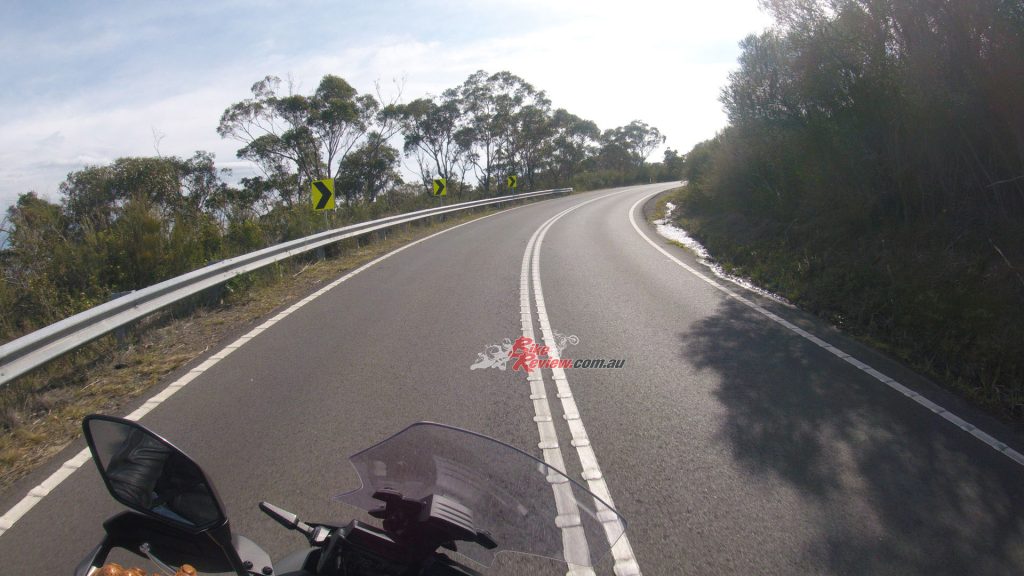
The Tracer 9 GT is a great handling bike, with the character of the MT-09 and added stability. I preferred A-2 at all times, even under sportier riding conditions. A-1 is the firmer setting but I felt the forks were giving inconsistent performance.
The levers are slim and comfy, with span adjustment on the brake lever, while the switches are standard big capacity MT range kit, which work well but I did have a few issues with the scroll wheel click not registering from time to time when selecting dash menu options. Speaking of levers, clutch take-up is abrupt and in the last few mm of lever travel, with a lot of rpm required to prevent stalling.
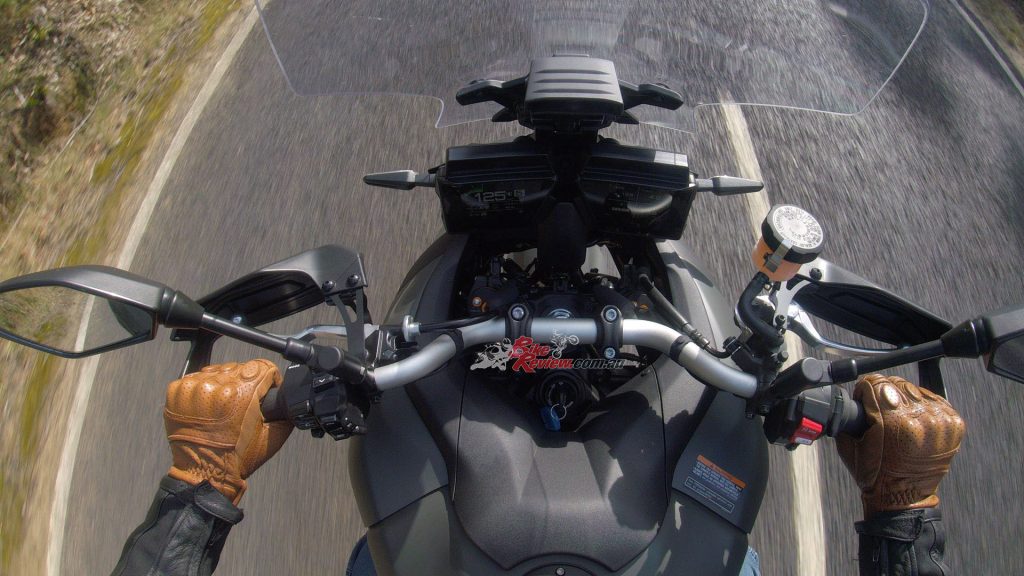
Great ergonomics, with plenty of adjustment on offer. The handguards are great, the mirrors a tad small. Span adjustment on the clutch lever would be nice…
It’s something that became a little annoying, having to ride the bike like a two-stroke at low speed to avoid a guaranteed stall, and the clutch action seemed inconsistent too in take-up point, so I reckon I stalled it over a dozen times while I had the bike… It could have been an issue with our press bike…
The GT takes full advantage of that cracking CP3 motor, which is totally revised and smoother, more refined and mature than previously. Although it does lack some of the same raw punch and acceleration of the MT-09, it makes linear, progressive and strong power through the rev range and although it won’t win any drag championships, it is characterful, purposeful and it sounds fantastic. I really don’t know how Yamaha get away with their awesome exhaust notes! The Tracer cracks, crackles and rumbles, It doesn’t need a slip-on at all…
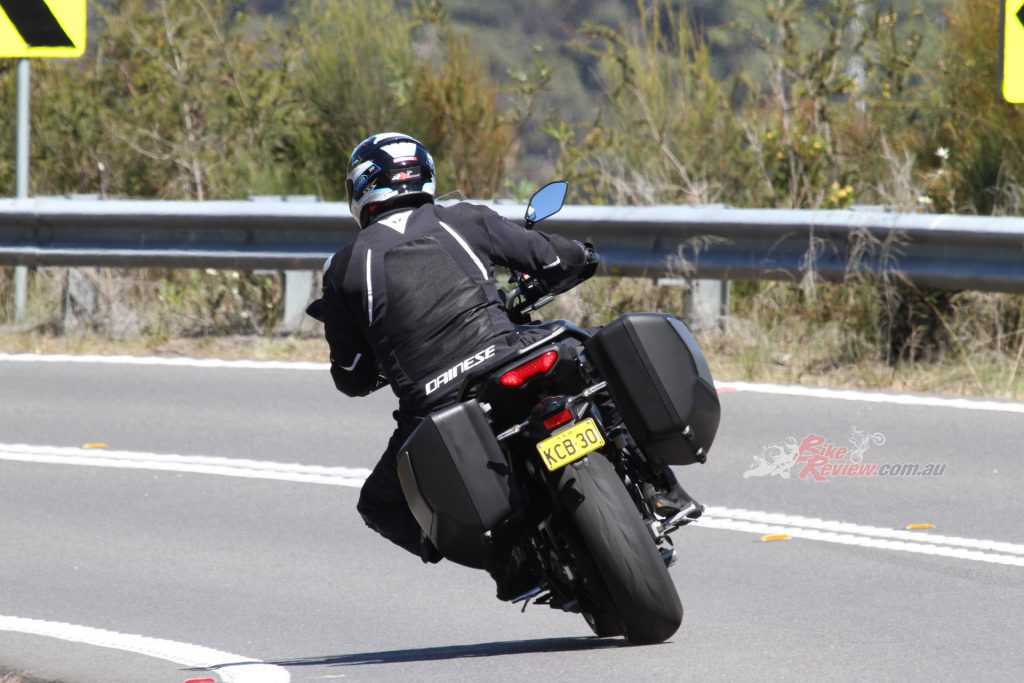
The new electronic suspension system mainly revolves around the forks, while at the back only rebound damping is controlled. Still, the system does an amazing job with what is an otherwise basic two-way adjustable shock.
The gearbox is a gem, the up and down quickshifter is smooth, accurate and fun and fuelling is good. There are multiple modes, with preset Mode 1 through 4, the first three offering full power but varying levels of delivery and electronic control, the fourth basically a rain map. There four modes also have their own presets for Cornering Traction Control System [TCS], Slide Control System [SCS], Lift Control System [LIF] and Cornering ABS (BC), plus there is a customisable option I did not try, where you can switch off the TCS, SCS or LIF systems should you want to have a bit of fun!
I spent 99 per cent of the test in Mode 2, which gives full power but a smoother throttle than the snappy Mode 1. The electronics presets worked well and suited everything from urban riding to full-on scratching up on my local twisties. Although it is more sensible than it was, I prefer this version of the CP3 in the Tracer, as it is just easier to push hard and the chassis remains balanced in part due to the more linear power deliver. It’s a good engine package, no doubt about it, and smooth. 4500rpm@110km/h on cruise is a place you could sit vibe-free all day long…
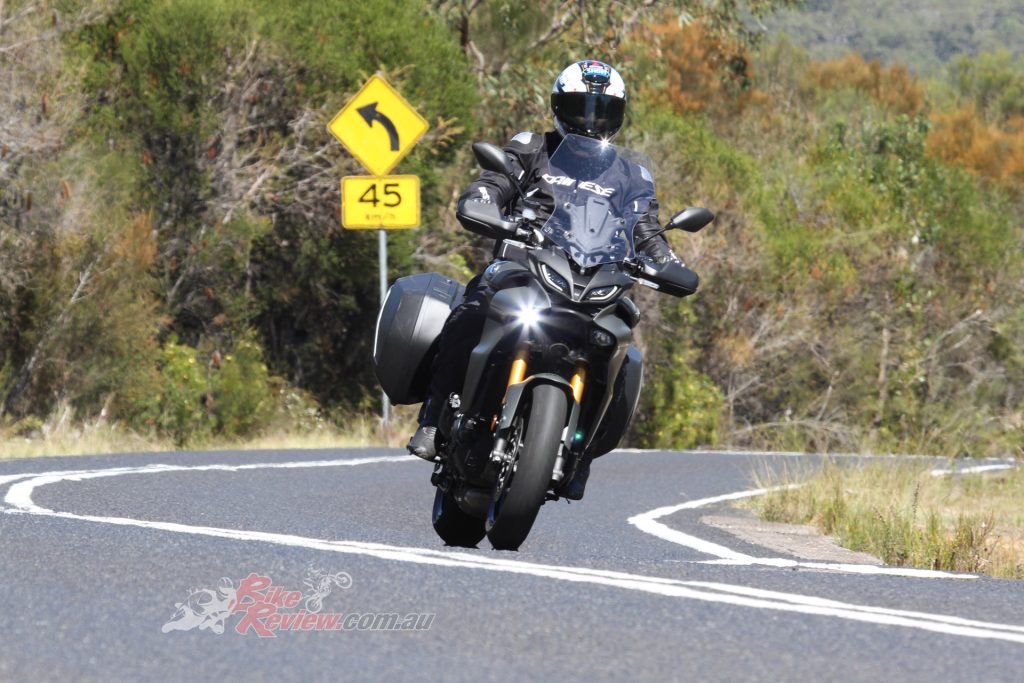
Touring or fanging it, the Tracer 9 GT will impress. A strong point where it defeats the MT-09 are fast bumpy roads, it eats them up. Touring is also comfortable and easy. A true all-rounder. Set the cruise control and relax…
Now for the chassis. The KYB set-up is simple. There are only two settings and no custom options. A-1 is for sporty riding and smooth roads, A-2 is general use. The forks are electronically controlled for both rebound and compression damping, the shock only for rebound. There is no rear compression adjustment available, while both ends have manual preload.
The package is a match made in heaven, and in almost all situations I found myself in on the Tracer 9 GT, it came out on top…
The chassis is born from the MT-09 with some tweaks including a longer swingarm (check the tech breakout). The package is a match made in heaven, and in almost all situations I found myself in on the Tracer 9 GT, it came out on top.
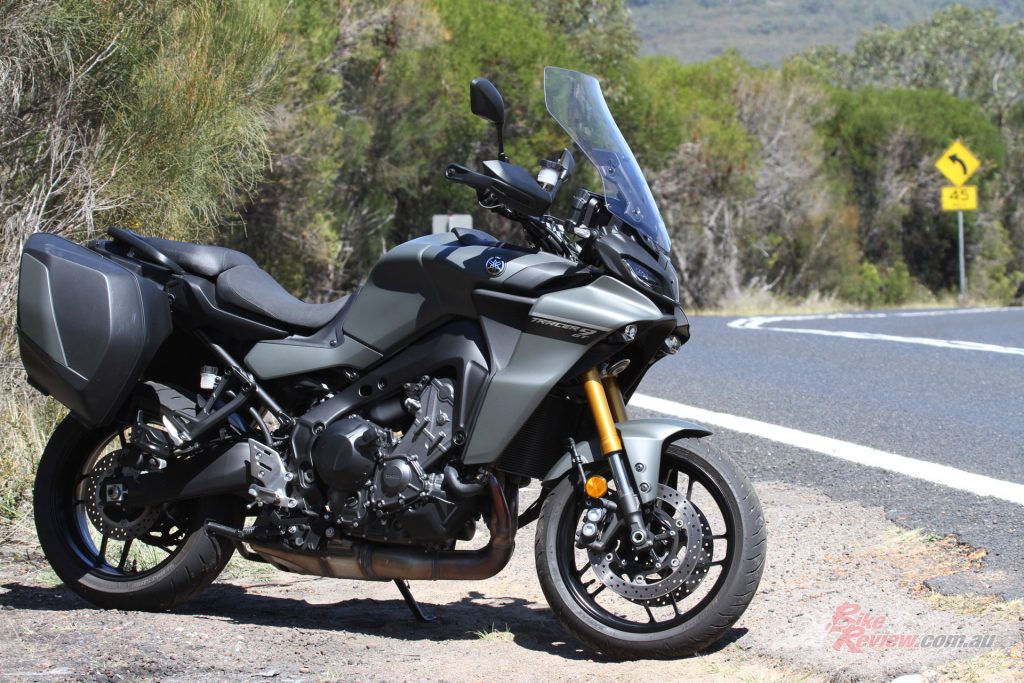
The chassis is a big step forward, the Tracer 9 GT is now a more confident and capable cornering bike, and can be punted along harder than previously. The KYB electronic suspension is basic but gets the job done very well.
In A-2 the suspension is plush and relaxed, but supportive enough to keep the chassis balanced and steering accurate. The forks will soak up bumps and road irregularities like a knife through butter, but start pushing harder and support arrives when you need it. It remains soft, but that suits the machine and means sporty riding is possible without having your teeth rattle out. At the back, there is less control, however, it’s good enough and even with loaded panniers and pillion, the bike won’t buck and weave until really pushed hard through the twisties. I added a touch more preload both ends, I’m 95kg, and it worked a treat. In A-1, I found it generally overdamped and the front-end seemed to be unpredictable and inconsistent when pushing on, as in, one second there is support, then it is soft, and often some front tyre chatter/skipping over road surfaces. On silky smooth hotmix, A-1 is OK, but on all other roads I preferred and could push more in A-2 mode.
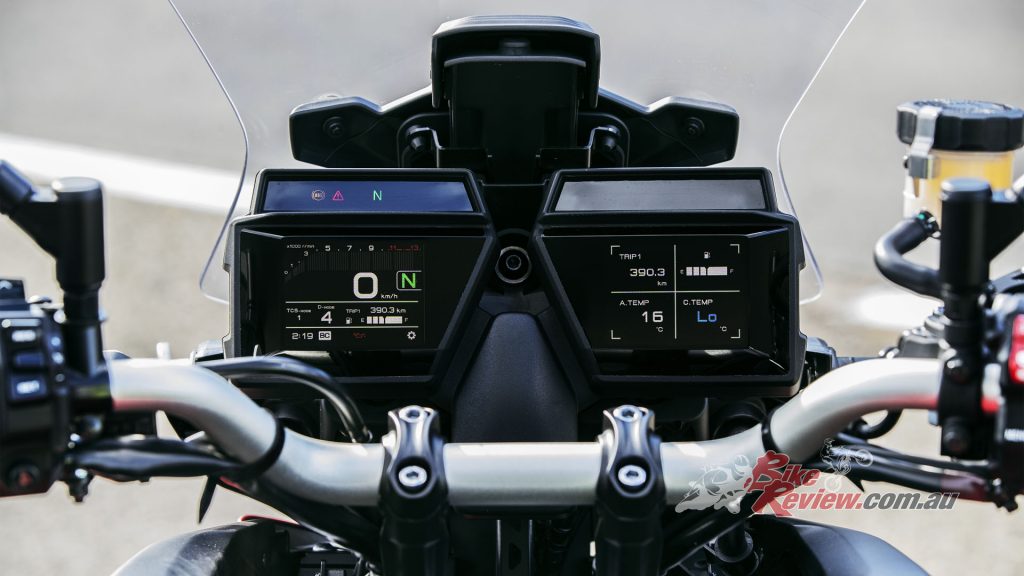
The split screen TFT dash displays the main info on the left and the right screen has four quadrants each with trip, fuel and temp and these can be altered to your preference to show other info. General warning lights are at the top.
That brings me to the brakes, the only area of the Tracer 9 GT that left me wanting more. The linked system that incorporates corporates cornering ABS has two settings, BC-1 and BC-2. BC-1 is the normal ABS setting while BC-2 is more sensitive. I left it in BC-1 almost all of the time. I found both settings interfered a little too much with my braking and overall the braking performance was on the lower side, with a big squeeze needed.
Bigger rotors and non-linked brakes would help solve it. The Tracer 9 GT will stop, but there are times when the intervention comes in too early, causing a bit of a heart rate increase! And the linked brakes, well, I’ve never been a fan on any bike… But the brakes are not a deal breaker, as they do get the job done and are easily forgiven thanks to the rest of the bike.
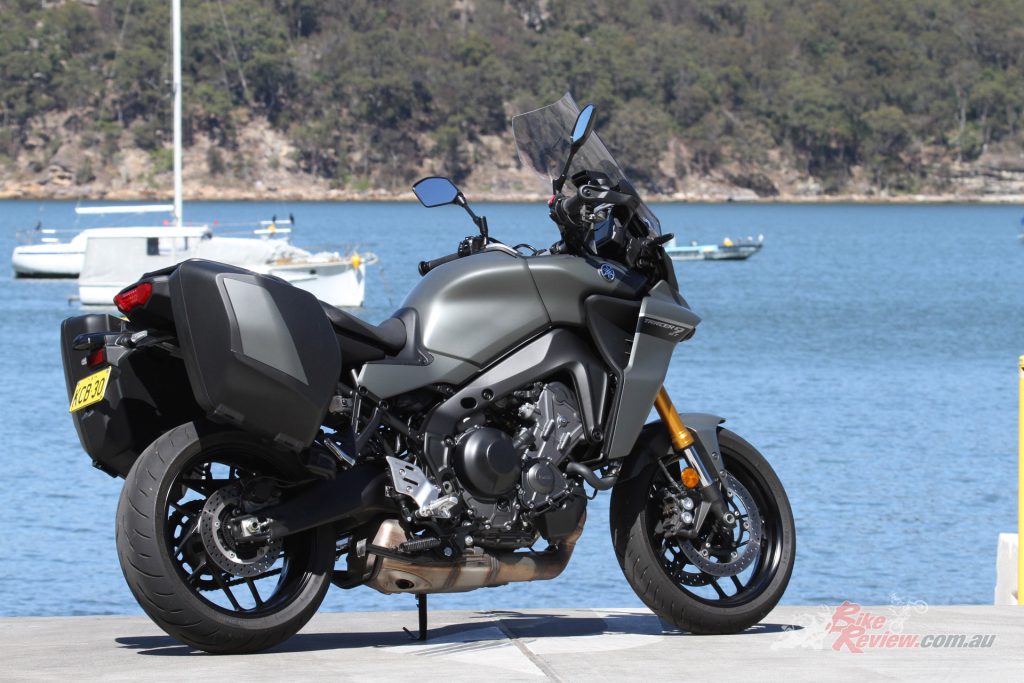
It’s not perfect but it isn’t far from it. The Tracer 9 GT continues to be an individual in a garage of similar sports tourers, with that CP3 character now backed up by modern electronics. Worth a test ride at your local Yamaha Dealership.
The split screen TFT dash displays the main info on the left and the right screen has four quadrants each with trip, fuel and temp and these can be altered to your preference to show other info. General warning lights are at the top.the price (over five grand more than the MT-09SP), for the price, we would expect Bluetooth connectivity, nav and or an app.
So we have two reviews on the bike published, with two quite different experiences but similar results. Yamaha have done it again, taking the good old basic fun factor of the Tracer and modernised it, without over complicating things or adding extra weight.
The styling is a personal thing, I don’t mind it but really liked the old one, the price is not bad but electronic preload would be good and perhaps next model an electric screen. It has the heated grips now, plus lots of luxury bits, and it is a good medium sized bike with big bore performance and decent fuel economy (I filled up at 300-320km a few times, no issue, approximately 5.1L/100km).
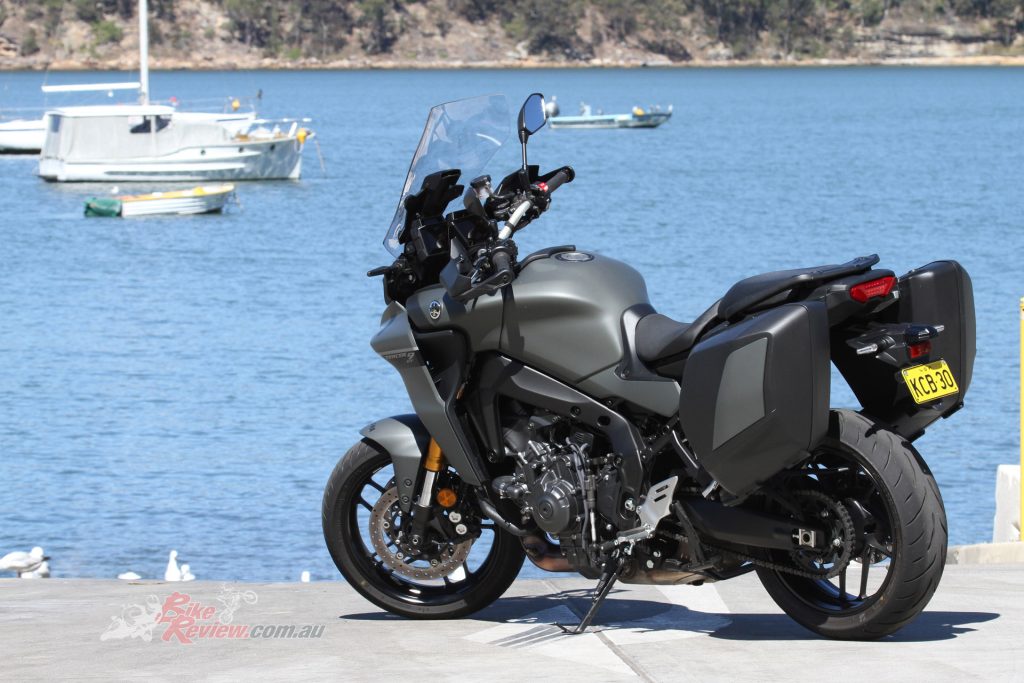
A range of at least 350-380km should be possible from the 19L tank. We averaged 5.1L/100km, mostly flat out!
2022 Tracer 9 GT Tech Talk
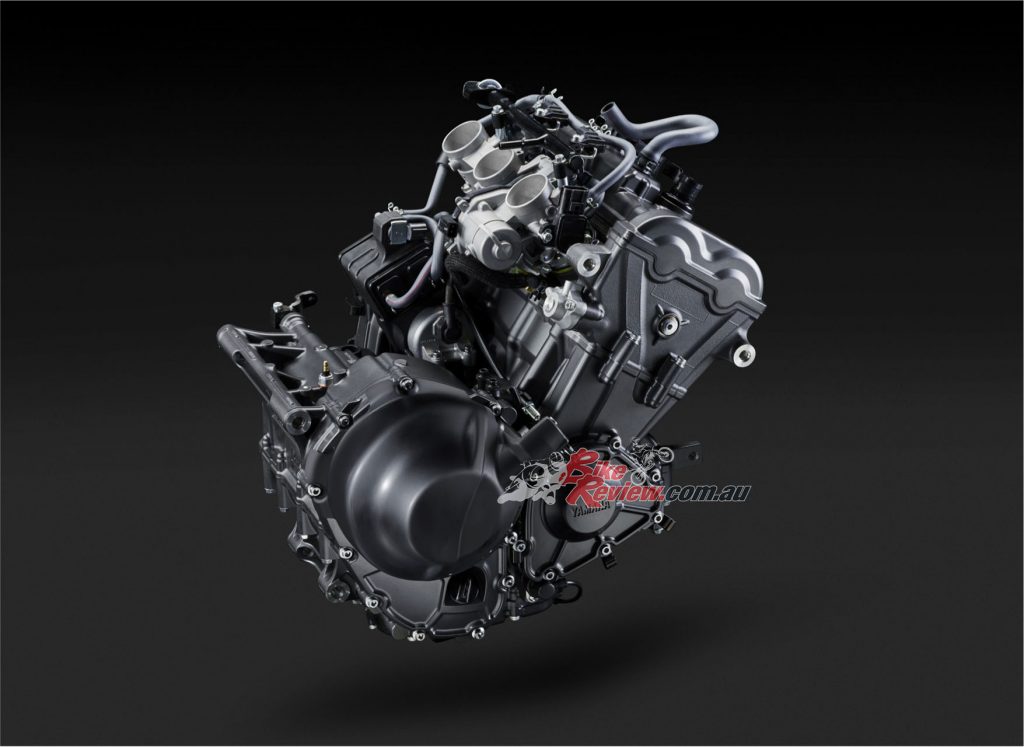
The Cross-plane three motor has been entirely changed for 2021. From its capacity all the way to how much it weighs.
The Crossplane three engine retains the concept of the old model: In line triple with forged pistons, offset cylinders and fracture split rods. All designed to handle high stress running. But the Yamaha engineers have changed virtually every component within it to enhance performance, efficiency and character. The crankshaft was redesigned to increase the inertial mass by 15%.
By redesigning and repositioning the fuel injectors, Yamaha reduced the camshaft overlap and working angle. This lets them produce a cleaner burn in the cylinder that allows removal of the secondary air injection system, for less complexity and weight. Almost every component had been touched and despite the bigger cc, total weight of the engine has been reduced by 1.7kg
Yamaha and KYB have jointly developed the Tracer 9 GT’s electronically-controlled semi-active suspension system that provides riding comfort combined with a precise feel from the road. Officially known as the KYB Actimatic Damper System (KADS), KYB say that this highly advanced suspension generates a much wider range of damping force than conventional suspension, and is able to respond instantly to varying riding conditions in order to achieve optimum handling performance.
This use of this semi-active suspension system has been made possible by the bike’s new IMU which works together with the ECU as well as the Hydraulic Unit (HU) and Suspension Control Unit (SCU) to calculate the optimum suspension settings for any given riding situation: fast or slow, wet or dry, smooth or bumpy, solo or two-up. The advantage of the solenoid system is that it is able to make extremely fast adjustments to damping settings. By constantly analysing and computing the 6-axis data, the IMU can signal the ECU to adjust damping settings in order to maintain chassis stability at all speeds, by doing so the KADS supplements the rider’s skills to ensure a comfortable yet sporty ride.
Another important improvement for 2021 is the repositioning of the new engine, which is now mounted in a more upright angle of 52.3º, compared to 47.5º on the previous model. These changes have been claimed to improve the overall balance of the lightweight CF die-cast chassis to give a higher degree of surface feedback from the front end, as well as a greater feeling of front end traction in corners.
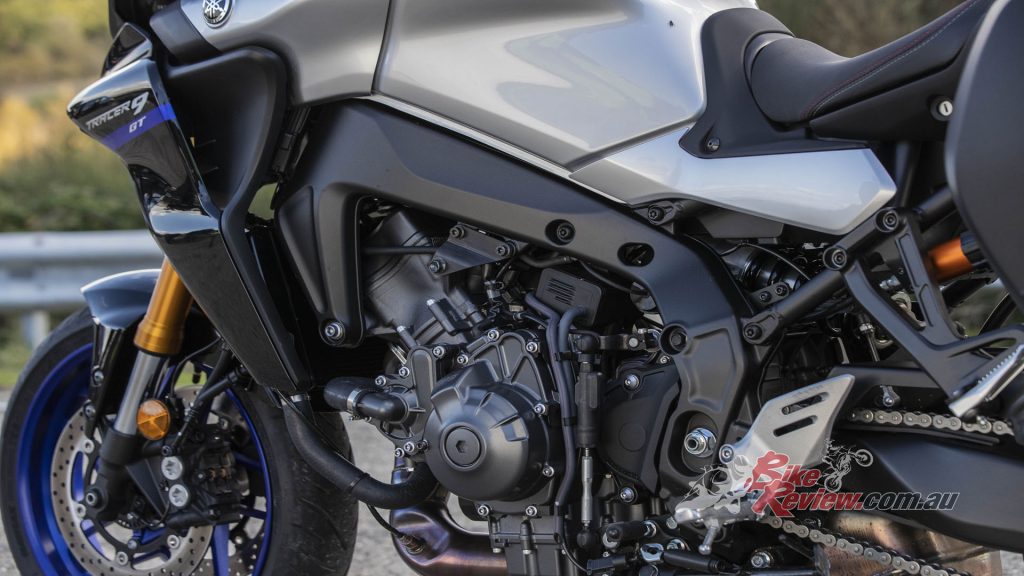
“The engine is now positioned in a more upright angle of 52.3º, compared to 47.5º on the previous model.”
The Tracer 9 GT is equipped with a completely redesigned lightweight aluminium swingarm that pivots inside the frame’s outer structure in contrast to the previous model’s external pivot points. Although externally similar in appearance to the design used on the 2021 MT-09, the Tracer 9 GT swingarm is actually 60mm longer, giving a 1500mm wheelbase – the same as the previous Tracer 900.
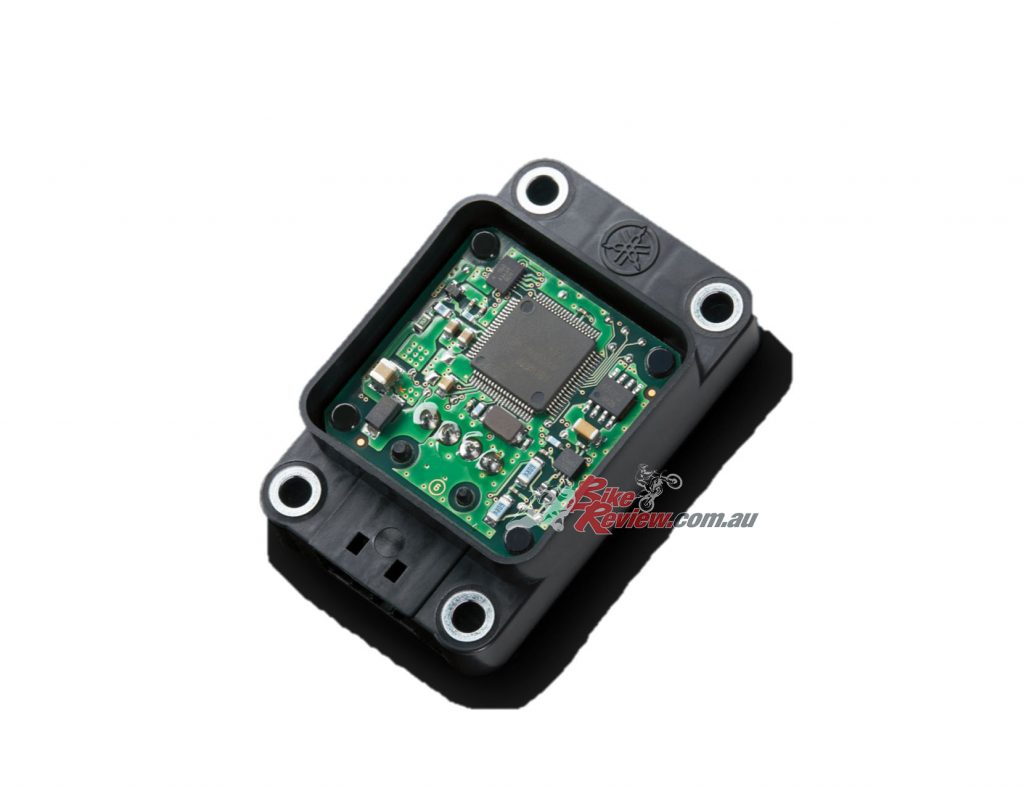
Rider assistance is controlled through this tiny box with a big brain, completely controllable through the TFT dash.
The 2021 features a new 6-axis IMU for lean sensitive rider aids which is lighter and more compact than the R1 system. In this system, riders get Cornering Traction Control System [TCS], Slide Control System [SCS], Lift Control System [LIF] and Cornering ABS (BC). All of this is controlled through Bosch’s 9.1MP based system which allows the ride to set their profile to suit their style.
The Tracer 9 GT is also equipped with a 2-Mode Brake Control (BC) system that provides added chassis stability during emergency braking situations. Data from the IMU is constantly analysed, and when excessive lever pressure is applied to the front or rear brake by the rider, the pressure is automatically modulated by the BC system. You can select either of two modes: BC1 is the standard ABS-active mode which prevents wheel lock-up during emergency braking in an upright, straight-line situation. When set to BC2, the system offers an even higher level of intervention by controlling brake pressure when the IMU senses that the chassis is likely to become unsettled.
An intuitive interface allows quick changes to the rider aids and throttle modes with the switches on the left had switch cluster while riding, while the key system information can be programmed through the scroll wheel on the right hand switch cluster when stopped, separately the active and passive functionality. Cruise control is also easily set on the left hand side of the handlebars.
Yamaha have also applied some aesthetic changes to the 2021 model. Yamaha say very careful consideration was given to the layout and shape of the three-bag luggage system, and the overall look of the side cases and top case is designed to complement the bike’s sporty and dynamic character. Along with this is new front fairing and a fuel tank cover to create a more dynamic look, with twin eye LED headlights and LED lighting throughout, it matches the Yamaha family look.
Equipped with an intelligent cornering light system that is programmed to light up the road ahead when the IMU senses that the machine is leaning at more than 7º and its speed is at least 5 km/h. A key feature of this LED cornering light design is that the IMU’s high speed calculations and processing power enable the system to increase the brightness of the cornering lights as the banking angle increases, which Yamaha say gives the rider a clear field of vision when riding at night.
2022 Yamaha Tracer 9 GT Specifications
Price: $23,999 R/A (Feb 2022)
Warranty: Two-years unlimited km
Colours: Icon Performance, Tech Kamo
Claimed Power: 87.5kW@10,000rpm
Claimed Torque: 93Nm@7000rpm
Kerb Weight: 220kg
Fuel capacity: 19L
Engine: Liquid-cooled, four-stroke, DOHC, Cross plane triple, 78.0mm x 62.1mm bore x stroke, 889cc, 11.5:1 compression, three-into-one exhaust Gearbox: Six speed Clutch: Wet, multiple disc
Chassis: Aluminium Deltabox frame
Rake: 25° Trail: 108mm
Front Suspension: KYB telescopic fork, Electronically controlled, KYB Actimatic Damper System (KADS), 130mm of travel.
Rear Suspension: Swingarm (link suspension), 137mm travel
Brakes: Twin 298mm discs with four-piston radial-mount calipers, cornering ABS(f), Single 245mm disc with single-piston caliper, cornering ABS (r)
Wheels & Tyres: 10-spoke cast alloy wheels, 120/70 – 17 and 180/55 – 17 Bridgestone Battlax T32 tyres.
Dimensions
Wheelbase: 1500mm
Seat height: 810-825mm
Ground clearance: 135mm
Overall width: 885mm
Overall Length: 2175mm
Overall height: 1430/1470mm
Instruments: Full-colour Split TFT dash
The Verdict | Review: 2022 Yamaha Tracer 9 GT


